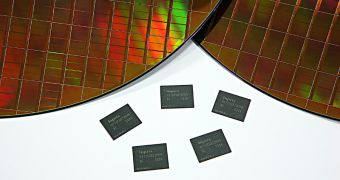It appears that all the troubles that hit the IT industry this year are turning out to be less disastrous than originally expected, with analysts now believing that the semiconductor market will still manage a significant growth by the end of 2011.
As the world knows, Japan was hit by a very big disaster on March 11, 2011, one that was a mix of earthquakes and tsunamis.
The biggest consequence of it was the nuclear meltdown that eventually happened at a power plant struck by the wave.
Meanwhile, power outages affected much of the infrastructure, including certain semiconductor manufacturing plants.
Because of the disruptions, it was feared that the yearly sales of semiconductors would plummet, but it looks like the damage was, ultimately, less severe.
A 7.2 percent increase in sales is now expected, due to the soaring shipments of smartphones and, naturally, tablets.
“Thanks to the hardiness of the global electronics supply chain, the semiconductor industry is set for a year of solid growth in 2011,” said Dale Ford, senior vice president for semiconductor market intelligence at IHS.
“Neither the Japan quake disaster nor weak economic conditions will derail the market’s expansion. In fact, demand has been so strong for semiconductors in hot consumer items such as tablets and smart phones that IHS has raised its forecast slightly to accommodate the improved outlook.”
The second half of the year should bring sequential semiconductor sales increases, probably 2.9% in the second and 7.4% in the third. Only the chips that are used in wired communications solutions are set to decrease (1.7%).
“Many exciting and innovative products will entice consumers to spend and support increases in electronics demand for 2011, driving continued semiconductor growth,” Ford said. “However, a key consideration will be whether the economy can maintain sufficient stability to support consumer confidence and spending.”

 14 DAY TRIAL //
14 DAY TRIAL //